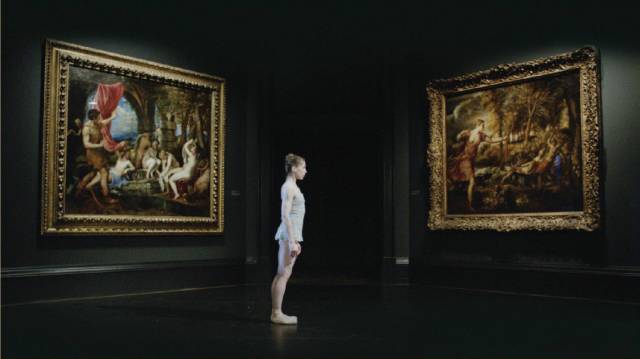
 The National Gallery in London’s Trafalgar Square is home to more than two thousand paintings and receives more than six million visitors each year (it’s the fourth most visited museum in the world!), but in Frederick Wiseman’s pragmatically-titled documentary, National Gallery, the institution is also home to some of the most unique personalities you will see in any film this or any year. A black title card with the film’s title is our ticket into a 180-minute experience that can only be compared to visiting an actual museum. Wiseman’s curious camera travels from room to room, running into ongoing tours, simple-looking offices plagued with bureaucratic issues and even nude models posing for sketchers.
The National Gallery in London’s Trafalgar Square is home to more than two thousand paintings and receives more than six million visitors each year (it’s the fourth most visited museum in the world!), but in Frederick Wiseman’s pragmatically-titled documentary, National Gallery, the institution is also home to some of the most unique personalities you will see in any film this or any year. A black title card with the film’s title is our ticket into a 180-minute experience that can only be compared to visiting an actual museum. Wiseman’s curious camera travels from room to room, running into ongoing tours, simple-looking offices plagued with bureaucratic issues and even nude models posing for sketchers.
A film made out of impressions, National Gallery offers little information about the people we’re seeing onscreen, none of them ever directly address Wiseman’s camera and there are no titles letting us know what their position is, or why should we care about what they have to say. We listen to poems about constellations, jokes about Moses and astute sexual commentary from a guide who points out that Rubens’ Samson, wouldn’t have lost his hair, and life, if he had showed more prowess and avoided a postcoital nap. By removing any sign of hierarchy, Wiseman makes this visit to the National Gallery feel absolutely democratic, we are allowed to have “dumb” opinions about the art we’re seeing and there is no one to make us feel lesser for it.
This feeling of democracy goes past the appreciation of art itself and reveals itself in how the director reminds us about the many parts that must work in order to make beauty work. We see carpenters hard at work fixing the floors, we see art being meticulously restored, we even see a giant picture frame being covered in gold leaf, all of which makes us realize how exemplary Wiseman is when it comes to discovering beauty in the mundane. Each of the sequences in the film feels necessary with some of them being pure gems, like the murder conspiracy theory behind Hans Holbein’s “The Ambassadors”, an unnecessary but nonetheless delightful valorization of Leonardo da Vinci and a smart dissection of a Vermeer, which highlights the painter’s effort in preserving ambiguity by marrying realism and abstraction. As someone in the film explains, it’s this ambiguity that keeps you coming back, that makes you see the painting with different eyes each and every time. They might as well be making a case for Frederick Wiseman’s work.